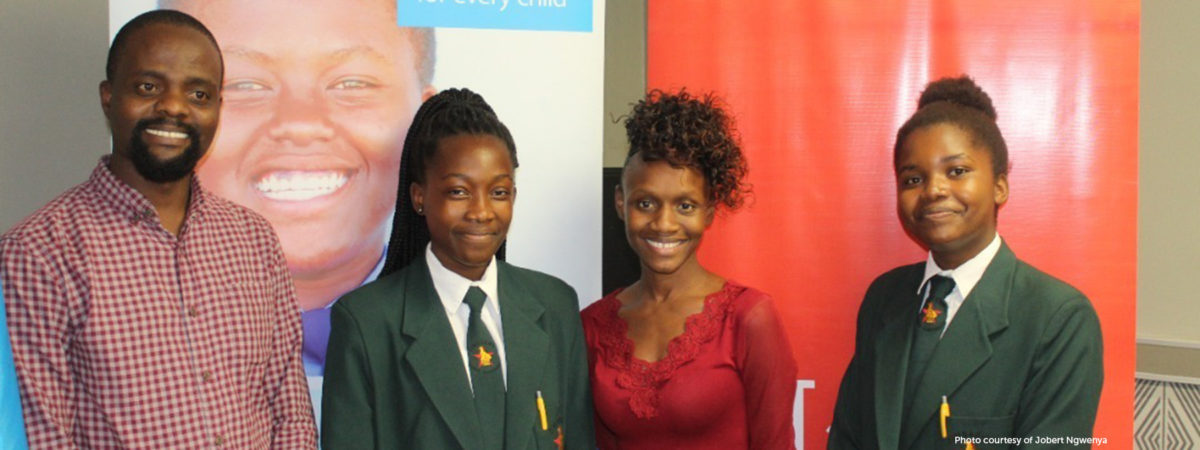
Despite these challenges, as a classroom educator at Eveline High School in Bulawayo, Zimbabwe, it became clear to me that adoption of digital technologies in education brings many opportunities to both the teacher and the learner. This gave me the impetus to develop strategies to effectively bring technologies into my own classroom. I found that letting learners pick and drive forward the kinds of tech they wanted to use to show their learning helped motivate my students and build their confidence.
The competence-based curriculum in Zimbabwe seeks to develop learners who are ready for life and work in a globalized environment, with digital skills meant for an information-driven economy. To help students build academic and professional skills, the government introduced Continuous Assessment Learner Activities (CALAs), which contribute to secondary students’ final grades. These CALAs have given learners a pedestal to use the digital technologies available to them. In particular, using mobile phones came in handy for promoting experiential learning in the face of skills gaps among teachers, as well as the cost barriers of other kinds of tech for families and institutions.
For Eveline High School, I took up digital tools in the subject areas that I teach: entrepreneurship education, economic history, and heritage studies. In aligning the edtech with the competence based curriculum, I launched an experiential learning project which aims to promote learner creativity, critical thinking, collaboration, communication, and problem solving. The project, later gaining support from the National Geographic Education, gave learners the opportunity to research, record, and share indigenous knowledge during the COVID-19 lockdowns. The students gathered data using mobile phones, tablets, and voice recorders, and together we published their work on a digital depository.
With the disruptions caused by the pandemic, the government reintroduced continuous assessment work as part of exit examinations. This gave me the autonomy to structure these tasks using edtech as a basis. Learners can present their assessment work using the digital platforms of their choice, producing speeches, poems, talk shows, podcasts, and folktales as part of knowledge acquisition and skills development. Students frequently choose digital tools like TikTok, Tumblr, WeVideo, Instagram, and YouTube, which come in handy for engaging students through a combination of entertainment and education.
Under our school’s entrepreneurship education program, learners used edtech tools in market research, marketing, and reporting of the school-based enterprise that produces a nutri-bar. Learners produced and published digital adverts and reports that they shared on various social media platforms, published blog posts, hosted online events that brought in the community and various education and health stakeholders, and participated in conferences. With learners taking the lead, their motivation and participation were high, and the icing on the cake was that they were also enthusiastic in teaching me how to use the different digital media platforms. In all this, as the educator I take a guiding role, giving direction on curriculum goals and policy issues while allowing the learners to choose what content to publish and on which digital platform.
The education system in Zimbabwe remains split over the use of edtech, as some still think that digital tools distract students and remove students’ opportunities for socialization. However, in my experience, giving learners the ability to lead their own digital learning is motivational, grows learner confidence, and, above all, helps build 21st century core skills. Working with motivated learners is equally motivating to the educator and also gives the educator opportunities to learn from the learners. To me, the onus is on the edtech developers to engage with teachers, students, and other education stakeholders to design engaging and unique edtech products that serve the process of teaching and learning.
To discover edtech tools that are rooted in learning sciences research and prioritize responding to learner variability, explore Digital Promise’s Product Certifications.